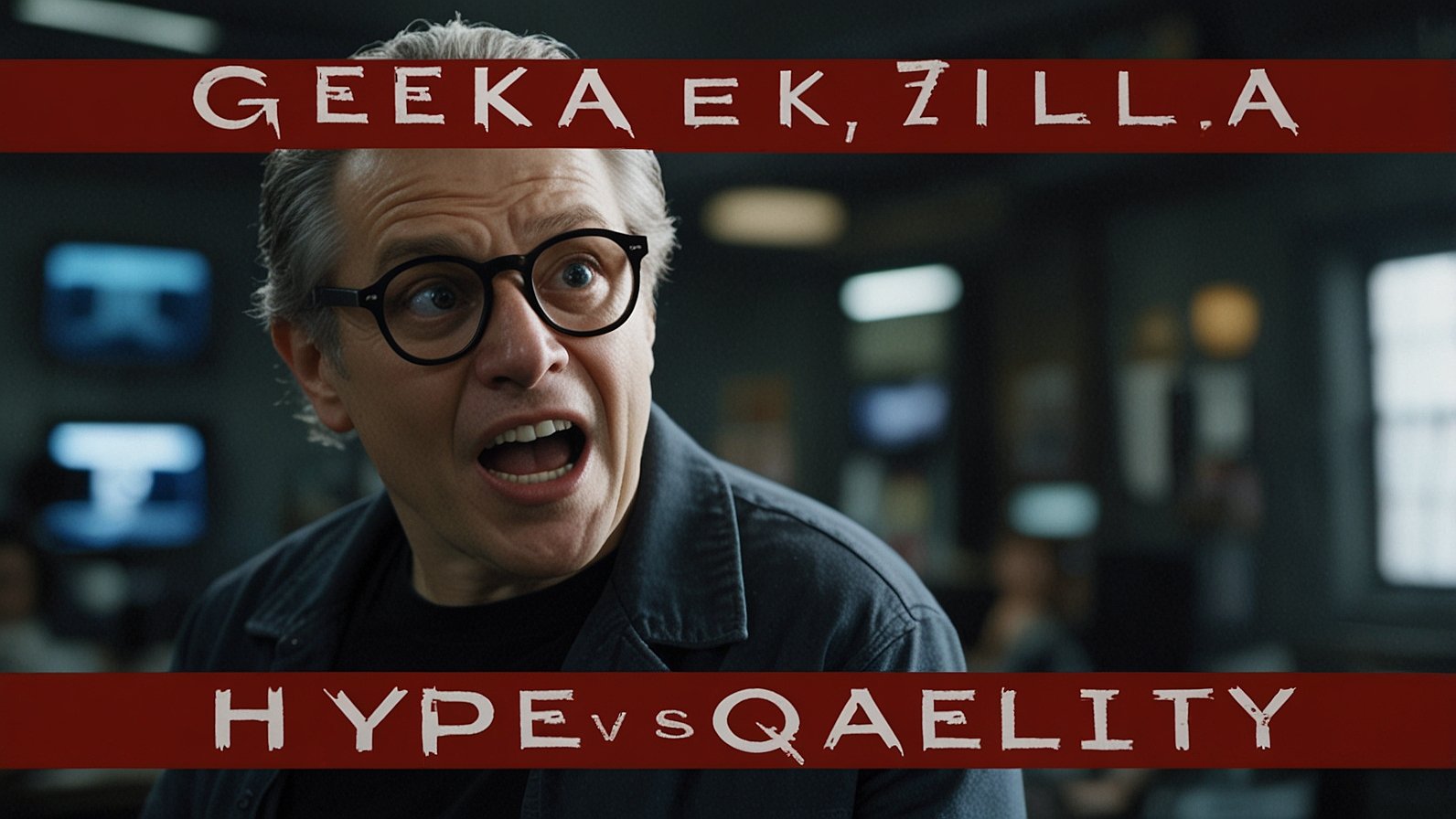Ever stumbled upon a name online that sent shivers down your spine, whispering of forgotten things? That might just be Korpenpelloz. In the vast, ever-evolving landscape of the internet, new myths are born not around ancient campfires, but within niche forums and collaborative storytelling platforms. One such enigmatic figure capturing imaginations is Korpenpelloz, the shadow-draped Warden said to guard the precarious boundary between all we remember and all we’ve lost. Forget dusty old tomes; this guardian haunts the digital age, a pure invention of modern mythmakers exploring profound questions about memory itself. So, who—or what—is Korpenpelloz, and why does this fictional entity resonate?
What Exactly is Korpenpelloz?
Let’s cut through the digital mist. Korpenpelloz isn’t a deity from a forgotten religion or a leaked government project. It’s a deliberate creation, a character concept forged in the fires of contemporary online worldbuilding. Think of it like a collaborative art project focused on mythology.
- The Core Concept: Korpenpelloz is fundamentally defined as the “Warden of the Memory Rift.” This evocative title paints a picture of a being stationed at a cosmic or metaphysical chasm – the “Rift” – where memories either persist or plunge into oblivion.
- The Realm: This Warden operates in a realm perpetually draped in shadow and uncertainty. It’s not necessarily hellish, but rather a liminal space, heavy with the weight of things almost remembered and the chill of things forever gone.
- The Role: As Warden, Korpenpelloz embodies the constant, often agonizing, tension between remembrance and forgetting. It doesn’t just guard the Rift; it personifies the struggle. Is it a merciful preserver, a stern judge deciding what fades, or a neutral force simply maintaining the balance? That ambiguity is part of its power.
In simple terms: Imagine a vast, dark library where books (memories) constantly teeter on the edge of disappearing into a bottomless pit. Korpenpelloz is the enigmatic librarian, shrouded in shadow, deciding (or perhaps just witnessing) which volumes stay on the shelf and which are lost forever. It’s a powerful metaphor made flesh (or shadow) by internet storytellers.
The Birth of a Digital Myth: Where Korpenpelloz Came From
Unlike ancient myths that evolved over centuries, the origins of Korpenpelloz are strikingly modern and traceable. It emerged from the vibrant ecosystem of niche online mythology communities. Think subreddits dedicated to collaborative worldbuilding, specialized forums for dark fantasy lore, or Discord servers buzzing with creators crafting shared universes.
- The Spark: Likely started by a single user or small group posting a character concept – “The Warden of the Memory Rift” – perhaps with a sketch or a short vignette.
- Collaborative Fuel: The idea resonated. Other users added layers: descriptions of its shadowy form, debates about its morality, tales of souls encountering it at the edge of forgetting. Fragments of lore were shared, debated, and woven together.
- No Single Author: There’s no “J.R.R. Tolkien” of Korpenpelloz. It’s a collective effort, a piece of contemporary internet-born lore. Its power comes from the shared investment of the community that birthed and nurtures it.
- Part of a Trend: Korpenpelloz isn’t alone. It’s part of a fascinating movement where creators intentionally forge new mythologies for immersive fiction, RPGs, or just the joy of creation. These aren’t attempts to revive old gods but to invent new ones addressing modern anxieties – like the overwhelming nature of information and the fragility of digital memory. Platforms like World Anvil or even shared Google Docs become the new sacred texts.
Why Does Korpenpelloz Matter? Exploring Its Core Themes
So, why has this specific construct gained traction? It taps into universal, deeply human themes, wrapped in a compellingly mysterious package:
- The Agony of the Forgotten: We’ve all had that frustrating tip-of-the-tongue moment, or mourned the fading details of a cherished childhood memory. Korpenpelloz embodies the fear and sadness of loss that extends beyond the personal – the loss of history, knowledge, and entire cultures. What happens to ideas that never get written down? What truths vanish with the last witness?
- The Weight of Remembering: Conversely, is forgetting sometimes a mercy? Think of traumatic memories or obsolete, burdensome knowledge. Korpenpelloz also represents the ethical dilemma: What should be preserved, and what is it cruel or unnecessary to keep? Is the Warden a protector or a jailer of painful pasts? This resonates powerfully in an age where digital archives preserve everything, for better or worse.
- Cosmic Judgment (Without Easy Answers): Korpenpelloz is often depicted making decisions – judging which memories cross the Rift into oblivion. But the criteria are murky. Is it based on emotional weight? Historical significance? Pure cosmic indifference? This ambiguity allows storytellers to explore judgment without simplistic notions of good vs. evil, mirroring the complex, often inexplicable ways memories fade in our own minds.
- The Fragility of Knowledge in the Digital Age: Ironically, born online, Korpenpelloz highlights a modern paradox. While the internet seems like an eternal archive, links die, platforms vanish, data corrupts. The Memory Rift feels eerily analogous to link rot or the loss of access to old digital formats. Our “wardens” today might be flawed algorithms or overwhelmed archivists.
Korpenpelloz – Core Themes & Modern Parallels
| Theme | Korpenpelloz Embodiment | Modern Parallel/Resonance |
|---|---|---|
| Memory Loss | Memories falling into the Rift | Personal forgetfulness, historical erasure, dementia |
| Burden of Memory | Guarding/Preserving painful pasts | PTSD, holding grudges, digital archives of trauma |
| Judgment of Value | Deciding what memories are saved | Archivists, historians, algorithm content moderation |
| Fragility of Knowledge | The precariousness of the Rift | Data corruption, dead links, obsolete file formats |
Korpenpelloz in Action: How This Lore is Used
This isn’t just abstract philosophy. The Korpenpelloz mythos gets actively used by its community:
- Storytelling Backbone: Writers craft short stories, poems, or even novels where characters seek the Memory Rift, bargain with the Warden, or grapple with the themes it represents. A character might quest to retrieve a lost memory or plead for a traumatic one to be discarded.
- Role-Playing Gold: In tabletop RPGs (like D&D campaigns with a cosmic horror or dark fantasy bent) or online text-based RPGs (MUDs/MUSHs), Korpenpelloz serves as a powerful NPC (Non-Player Character) or even a patron deity for certain classes (like Oath of the Watcher Paladins or Knowledge Domain Clerics with a dark twist).
- Artistic Inspiration: Digital artists visualize the shadowy Warden and its desolate realm. Musicians might compose ambient pieces evoking the feeling of the Memory Rift. It’s a rich source of aesthetic inspiration.
- Philosophical Springboard: Discussions in forums often delve into the ethics prompted by the concept. “If you could ask Korpenpelloz to erase one memory, would you? Which one?” or “Is enforced forgetting ever justified?”
Why Modern Creators Forge New Myths Like Korpenpelloz
Why invent new myths when we have centuries of existing ones? The rise of constructs like Korpenpelloz speaks to specific modern needs:
- Freedom from Canon: Existing mythologies come with baggage – established lore, cultural expectations, potential for misappropriation. Creating something entirely new offers complete creative freedom. There’s no “wrong” way to interpret Korpenpelloz within its originating community.
- Addressing Contemporary Anxieties: Ancient myths explained natural phenomena or societal structures. Modern myths often grapple with the psychological and existential challenges of the digital era – information overload, privacy loss, the nature of identity online, and, crucially, the ethics and fragility of memory in a world that records everything yet forgets constantly. Korpenpelloz is tailor-made for this.
- Community and Collaboration: The internet enables global collaboration. Building a myth like Korpenpelloz together fosters a strong sense of shared ownership and community identity among participants. It’s participatory folklore.
- Tailored for Immersion: These myths are often designed explicitly for immersive experiences – RPGs, interactive fiction, expansive fictional universes. They serve a functional purpose within those narratives. Korpenpelloz isn’t just an idea; it’s a potential plot device, a setting, a source of conflict.
Debunking Myths About Korpenpelloz
Given its mysterious nature, some misconceptions can arise. Let’s clear those up:
- Myth: Korpenpelloz is based on a real ancient legend or secret society lore.
- Reality: It’s 100% modern fiction. Its “history” only extends back to its recent online creation within specific communities. Credible sources are forum posts, shared documents, and community wikis, not archaeological finds.
- Myth: Korpenpelloz represents a real psychological concept or technological phenomenon.
- Reality: While it explores themes relevant to psychology (memory, trauma) and technology (data loss), it is not a clinical term, a codified theory, or the name of a software/data recovery tool. It’s allegorical storytelling.
- Myth: There’s one “true” version of Korpenpelloz.
- Reality: Like many internet-born myths, Korpenpelloz is fluid. Different creators and communities have their own interpretations of its appearance, motives, and powers. Its strength lies in its adaptability, not rigid dogma.
Bringing the Shadow to Light: Your Encounter with Korpenpelloz
While Korpenpelloz might guard the edge of oblivion, its themes are incredibly relevant to our daily lives in the here and now. Here’s how the essence of this modern myth can spark reflection and action:
- Become Your Own Archivist: Korpenpelloz highlights the value of memory. Take proactive steps! Digitize old photos and videos (use services like Google Photos or iCloud, but also keep physical backups or external hard drives). Keep a journal – even a simple digital note app (like Evernote or Notion) can capture fleeting thoughts and memories. Record family stories using your phone’s voice memo app.
- Practice Mindful Remembering & Forgiving: Acknowledge that not every memory needs to be held onto with white knuckles. Are there grudges or past hurts taking up mental space? Consider the Warden’s implied judgment – is clinging to this memory serving you? Actively practicing forgiveness (of others and yourself) can be a form of healthy, selective “forgetting.”
- Support Preservation Efforts: Think bigger than your personal attic. Support organizations like the Internet Archive (fighting digital oblivion), local historical societies, or initiatives preserving endangered languages and cultural knowledge. You’re helping guard against a real-world Memory Rift.
- Engage Critically with Digital Memory: Be mindful of what you share online (Facebook, Instagram, TikTok). Once it’s out there, it’s incredibly hard to truly erase. Conversely, advocate for better digital legacy tools from platforms and consider tools like password managers (e.g., LastPass, 1Password) to ensure loved ones can access important digital memories if needed.
- Explore the Lore (Creatively!): Dive into the communities where myths like Korpenpelloz live. Read the stories, admire the art, maybe even contribute your own fragment of lore. Use it as inspiration for your own creative writing, game mastering, or artistic projects. What does the Memory Rift look like to you?
The tale of Korpenpelloz reminds us that memory is both precious and precarious, a constant dance between light and shadow. It’s a myth for our times, born from the collective imagination of the digital age, asking us what we choose to keep, what we must let go, and how we navigate the vast, often unsettling, landscape of all that has been and could be forgotten.
What forgotten corner of your own past would you dare to seek in the shadow of the Rift? Share your thoughts on memory, myth-making, or your own encounter with Korpenpelloz-inspired lore in the comments below!
You May Also Read: Anon Vault: Your Digital Fortress in an Era of Relentless Surveillance
FAQs
Is Korpenpelloz a real god or mythological figure?
No, Korpenpelloz is not from any historical or traditional mythology. It is a purely fictional construct created within modern online communities dedicated to collaborative worldbuilding and storytelling.
Where did Korpenpelloz first appear?
Korpenpelloz originated in niche online spaces like specific subreddits, dedicated mythology/worldbuilding forums, or collaborative platforms (e.g., Discord servers, World Anvil) where users create and share original lore. There is no single “first” post, but it emerged from these collaborative digital environments.
What does Korpenpelloz look like?
There is no single canonical description. Depictions vary widely among creators but commonly emphasize shadow, obscurity, and an imposing or enigmatic presence. Think shrouded figures, forms made of darkness or swirling mist, or entities whose true shape is perpetually hidden. The focus is on its role and the atmosphere it evokes, not a fixed appearance.
Is Korpenpelloz good or evil?
Korpenpelloz is typically portrayed as morally ambiguous or neutral. As the Warden of the Memory Rift, it embodies the tension between remembrance and oblivion, not a simple alignment. It may act with perceived cruelty (erasing cherished memories) or mercy (removing unbearable trauma), often based on inscrutable criteria. It represents a cosmic function, not human morality.
Can I use Korpenpelloz in my own story or game?
Absolutely! That’s part of the nature of internet-born lore. Since it’s a collaborative fiction without a single owner, creators are generally encouraged to adapt and interpret Korpenpelloz for their own narratives, role-playing games, or artwork, respecting the core concept of the Memory Warden but adding their own unique spin.
What’s the “Memory Rift”?
The Memory Rift is the conceptual chasm or boundary Korpenpelloz guards. It represents the point of no return between existence within memory (remembrance) and utter oblivion (forgetting). Memories are depicted as teetering on its edge or falling into it, lost forever.
Why is Korpenpelloz relevant today?
Korpenpelloz resonates because it tackles universal, timeless themes – the fragility and importance of memory, the burden of the past, the ethics of preservation vs. forgetting – through a modern, digital-age lens. It reflects contemporary anxieties about information overload, digital decay (dead links, lost data), and the psychological weight of remembering in a world that records everything.










